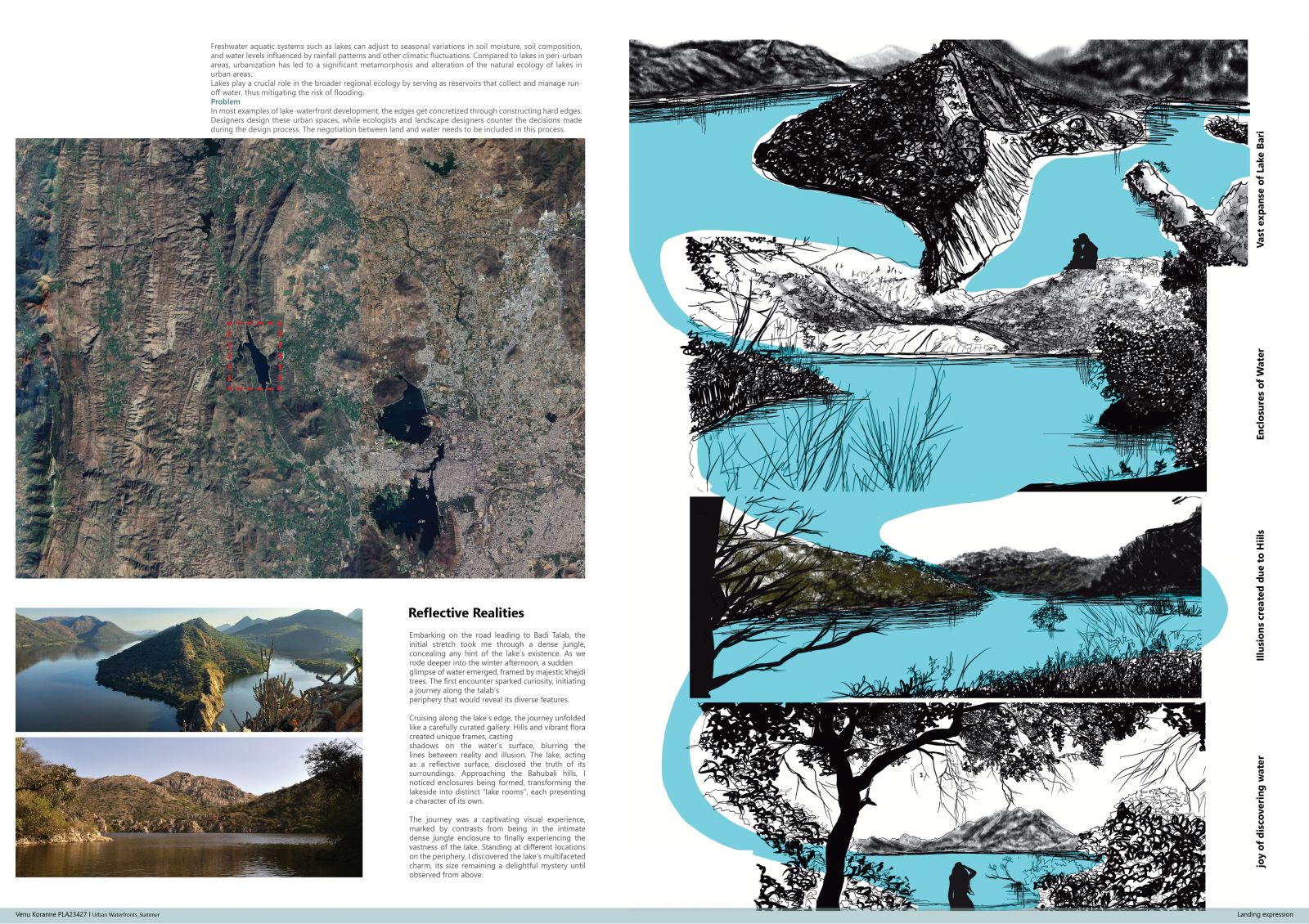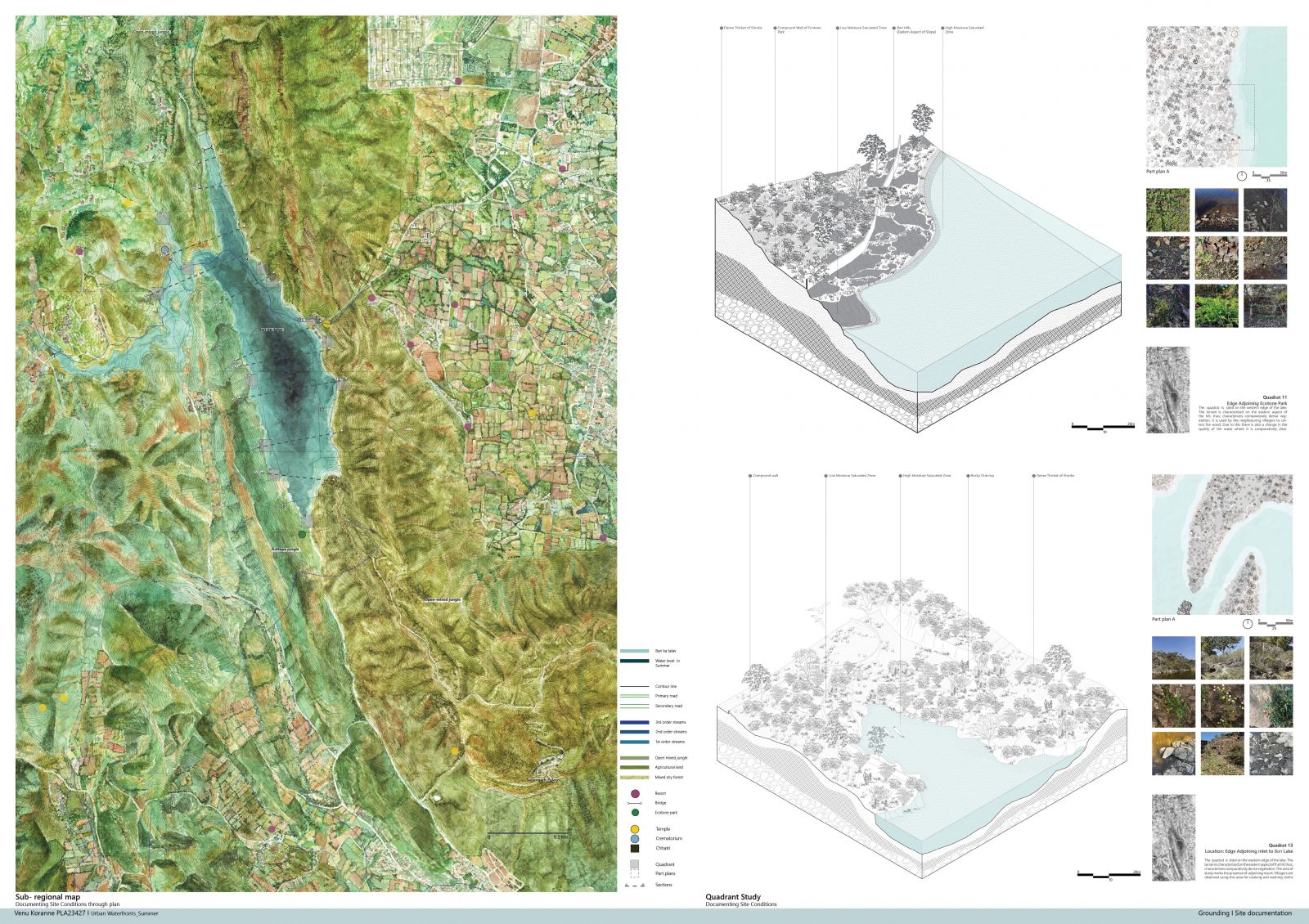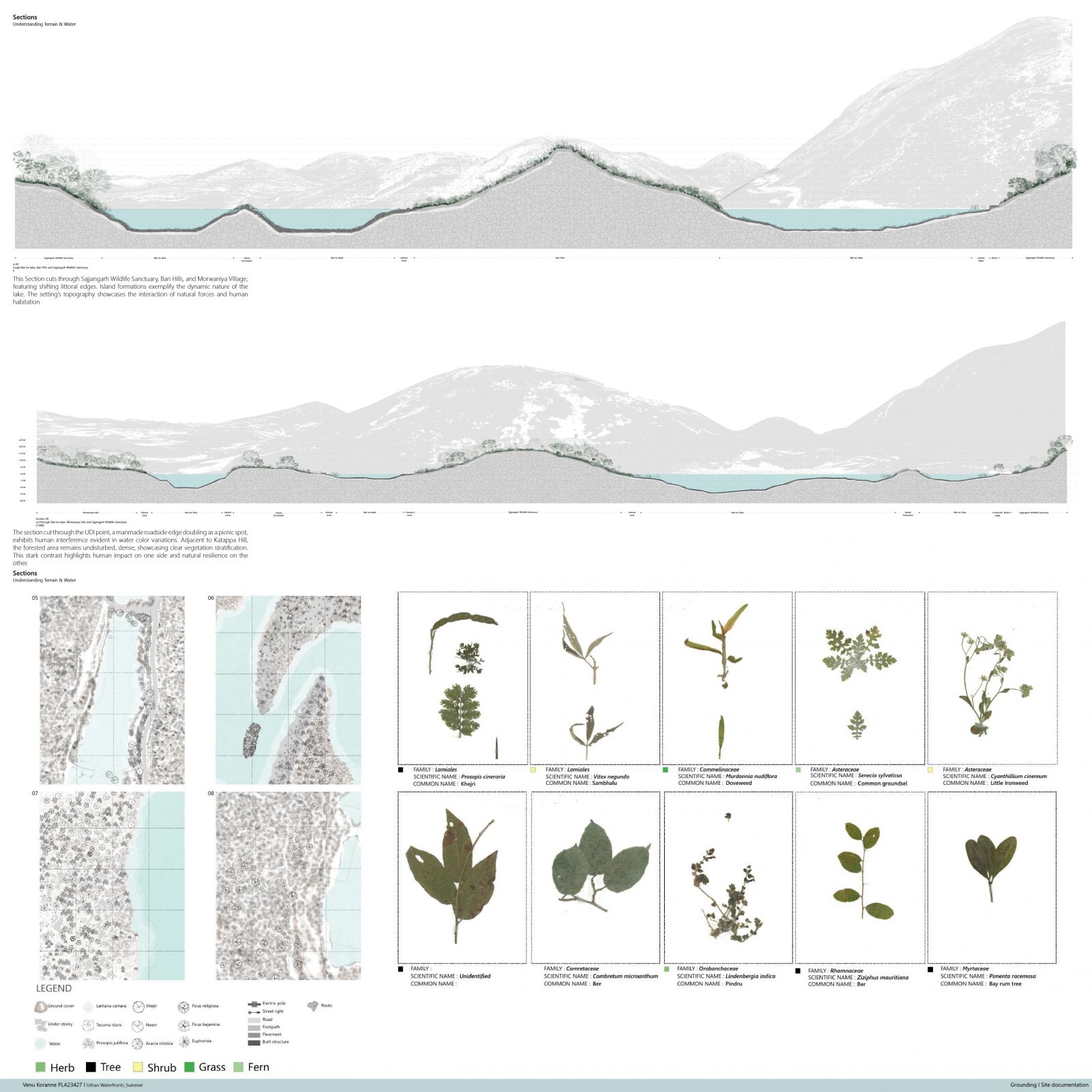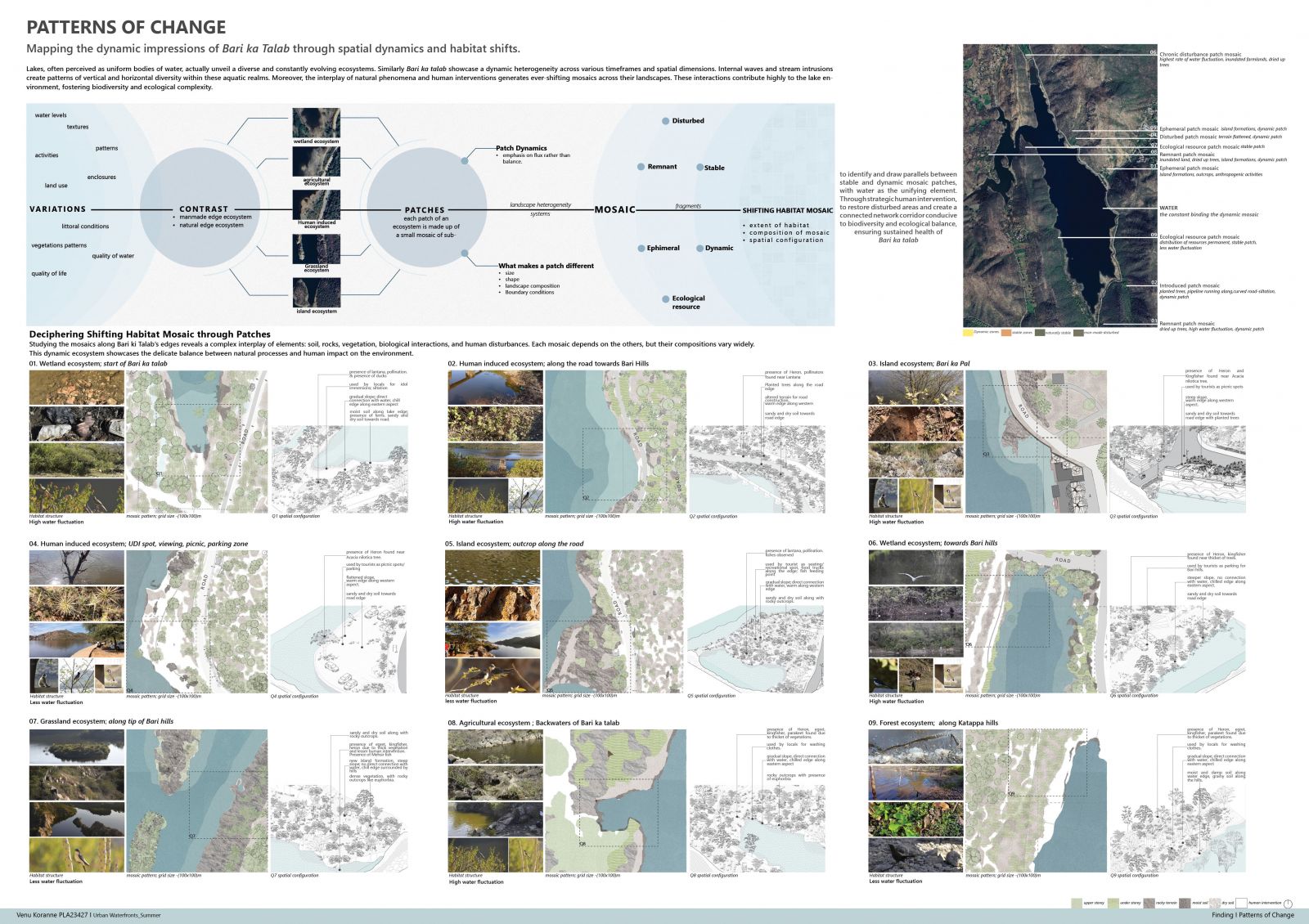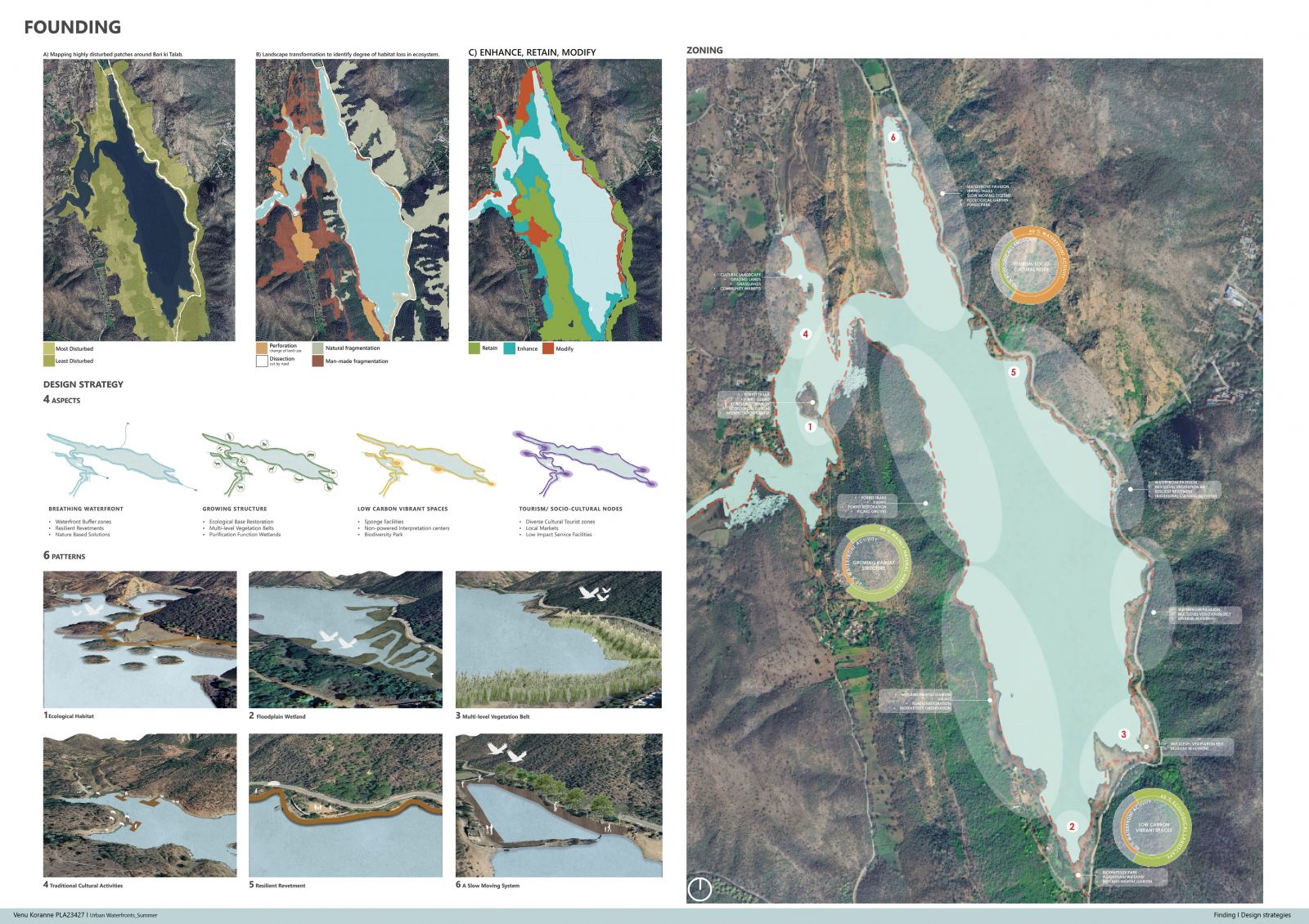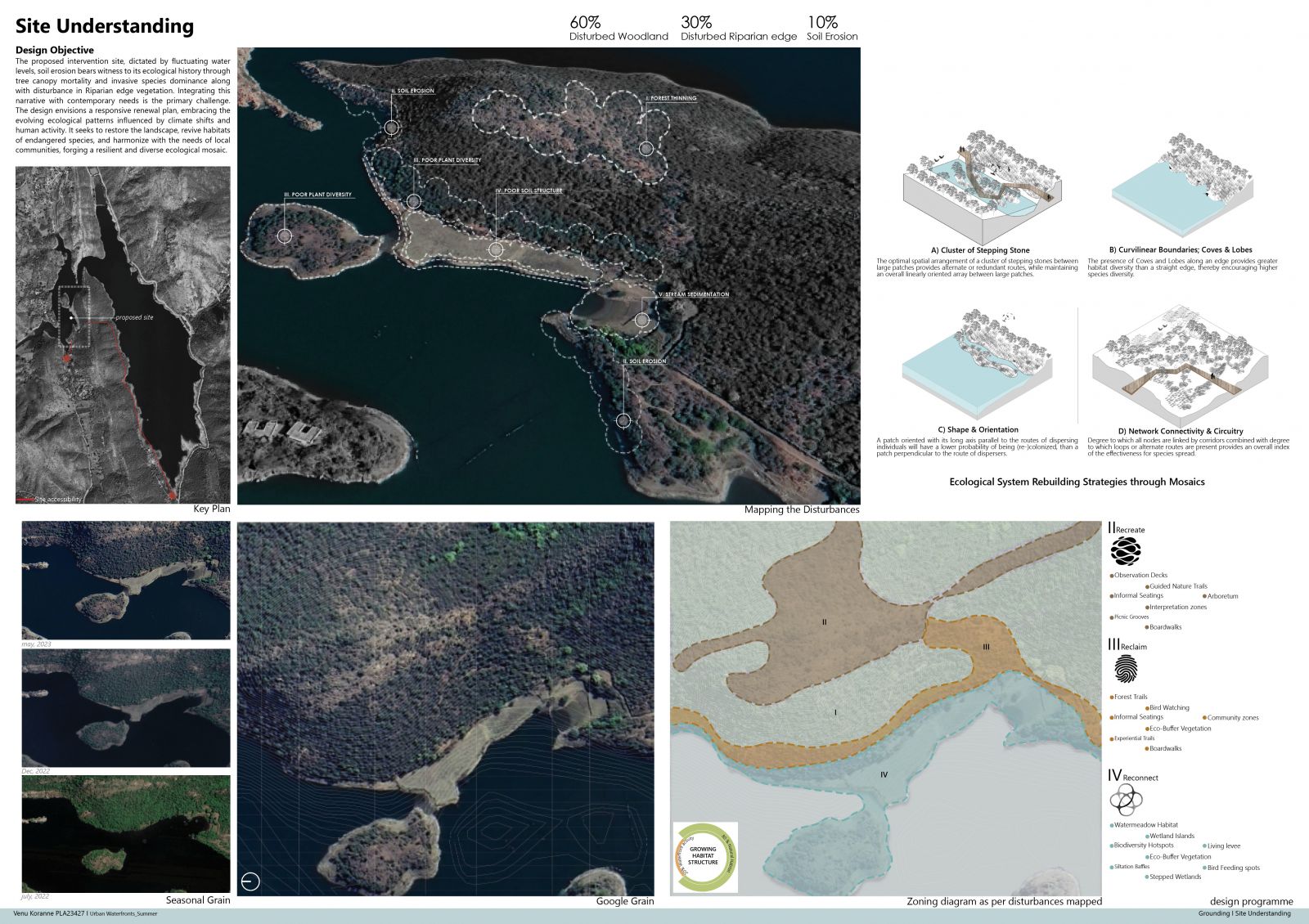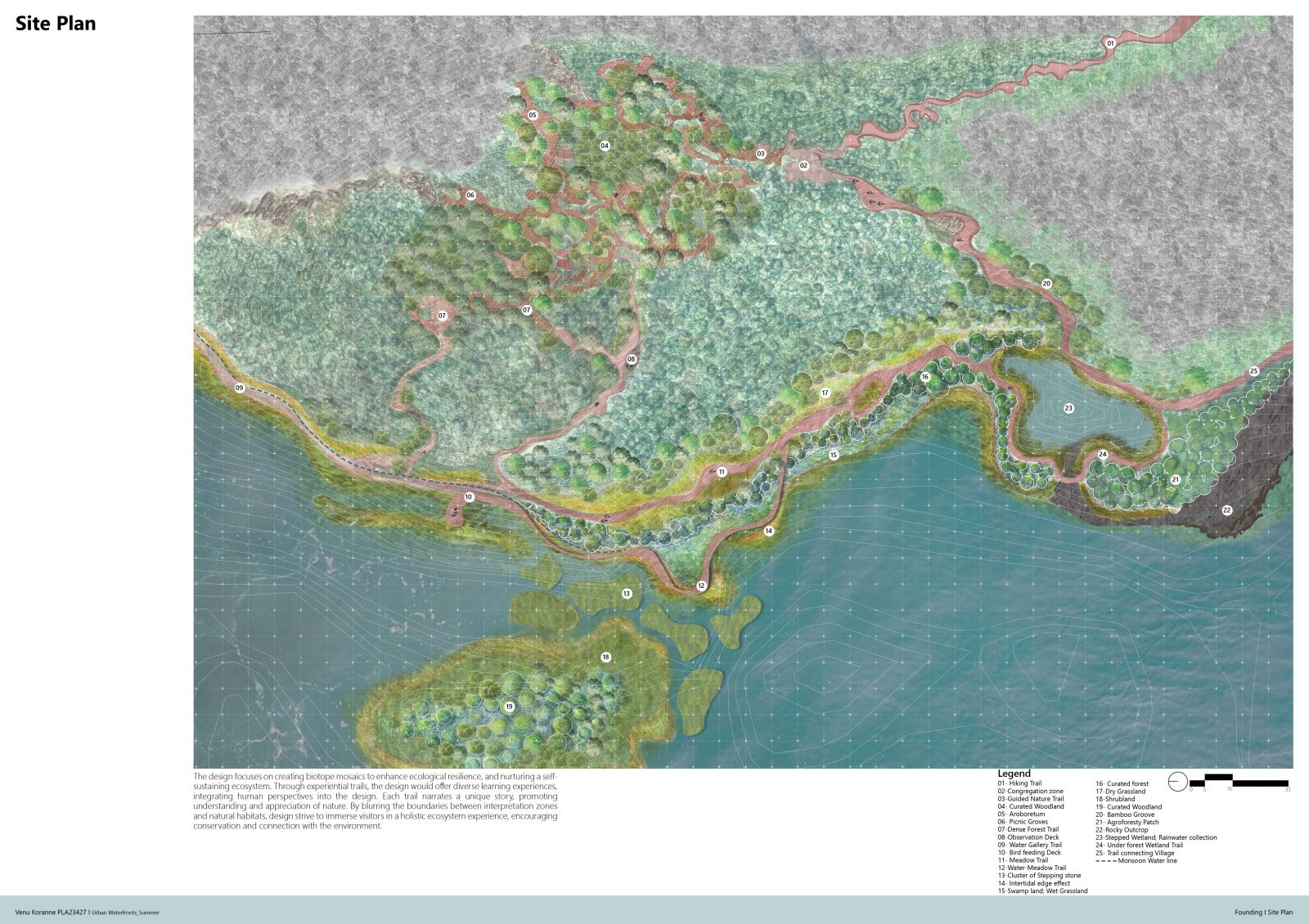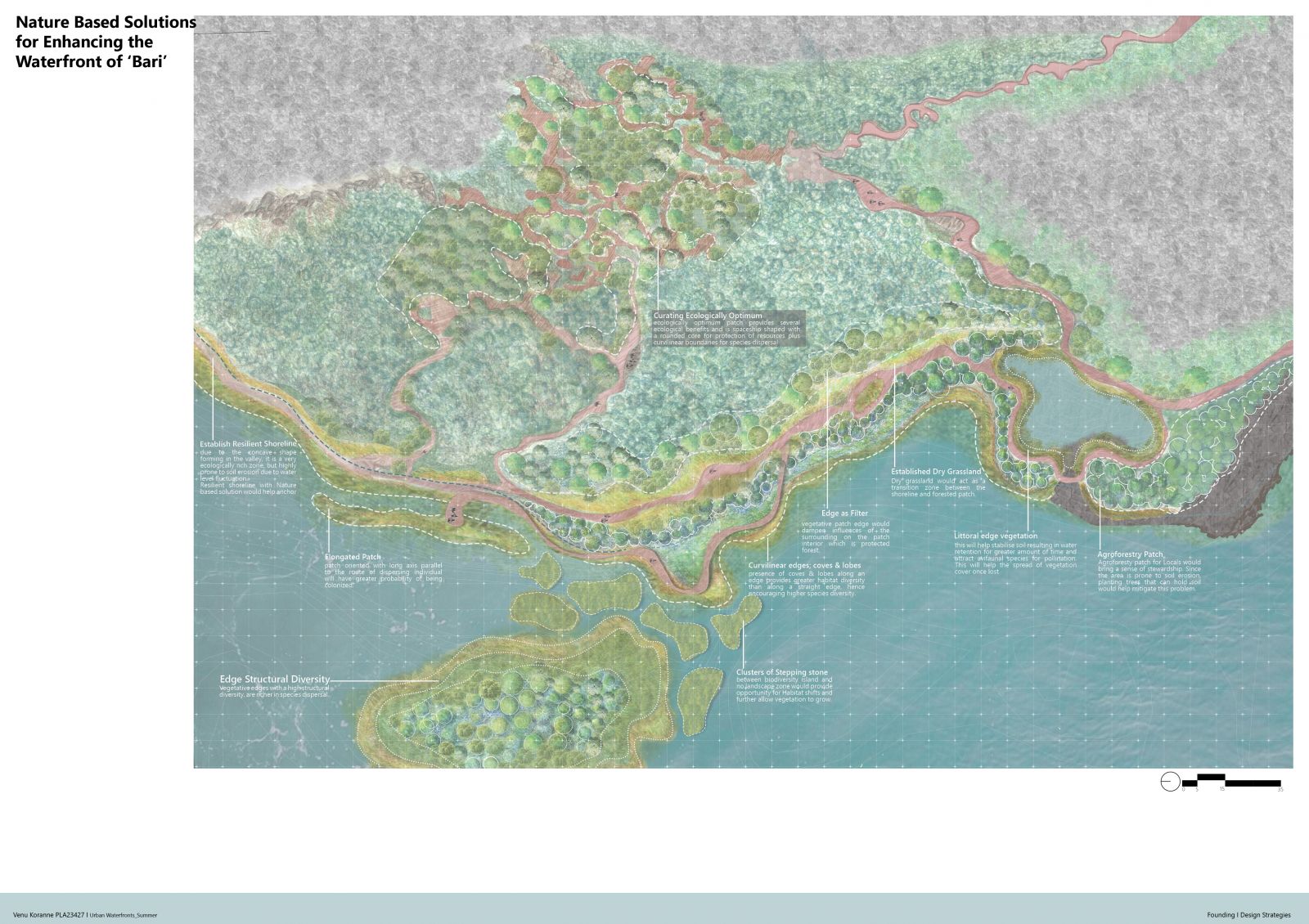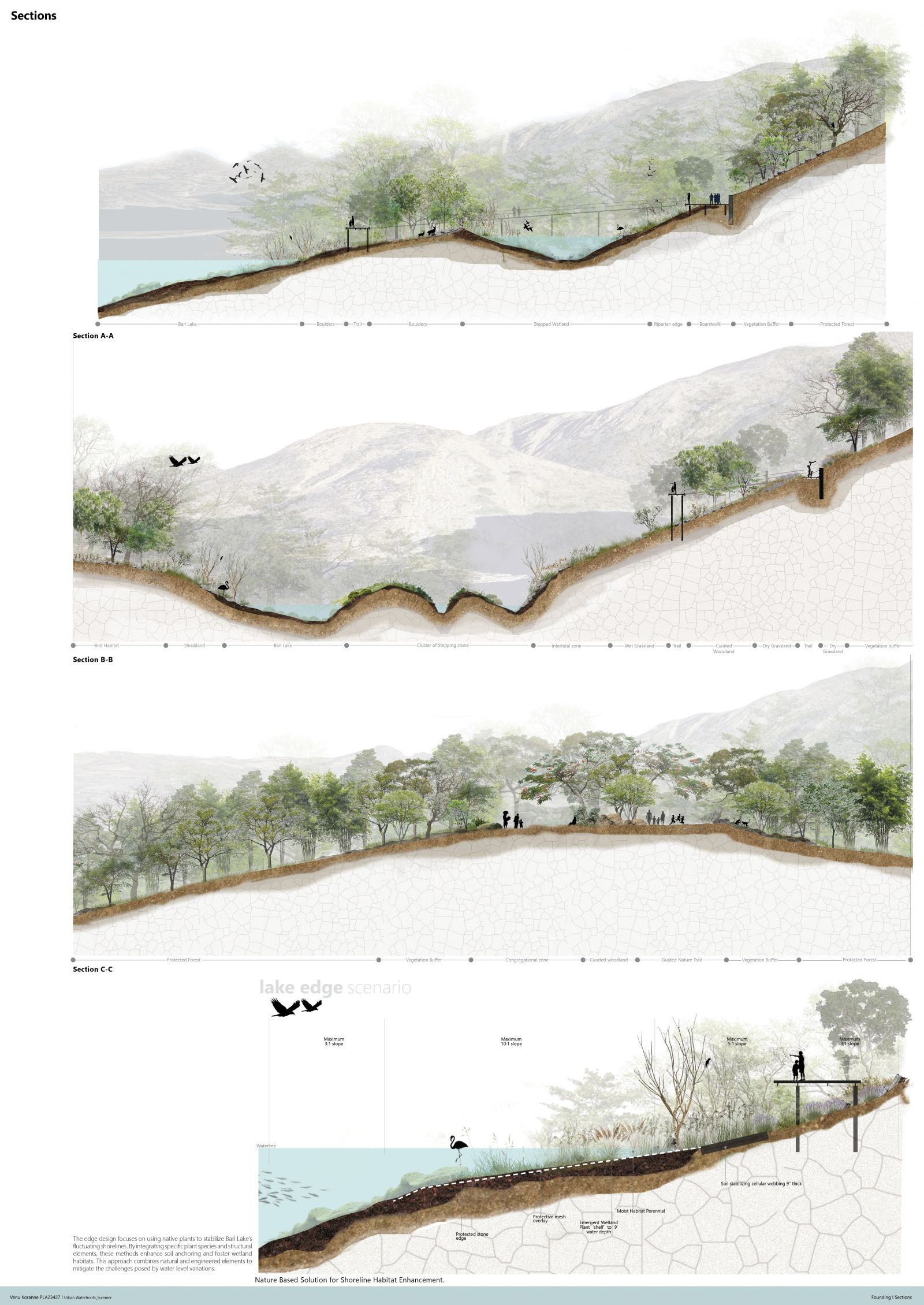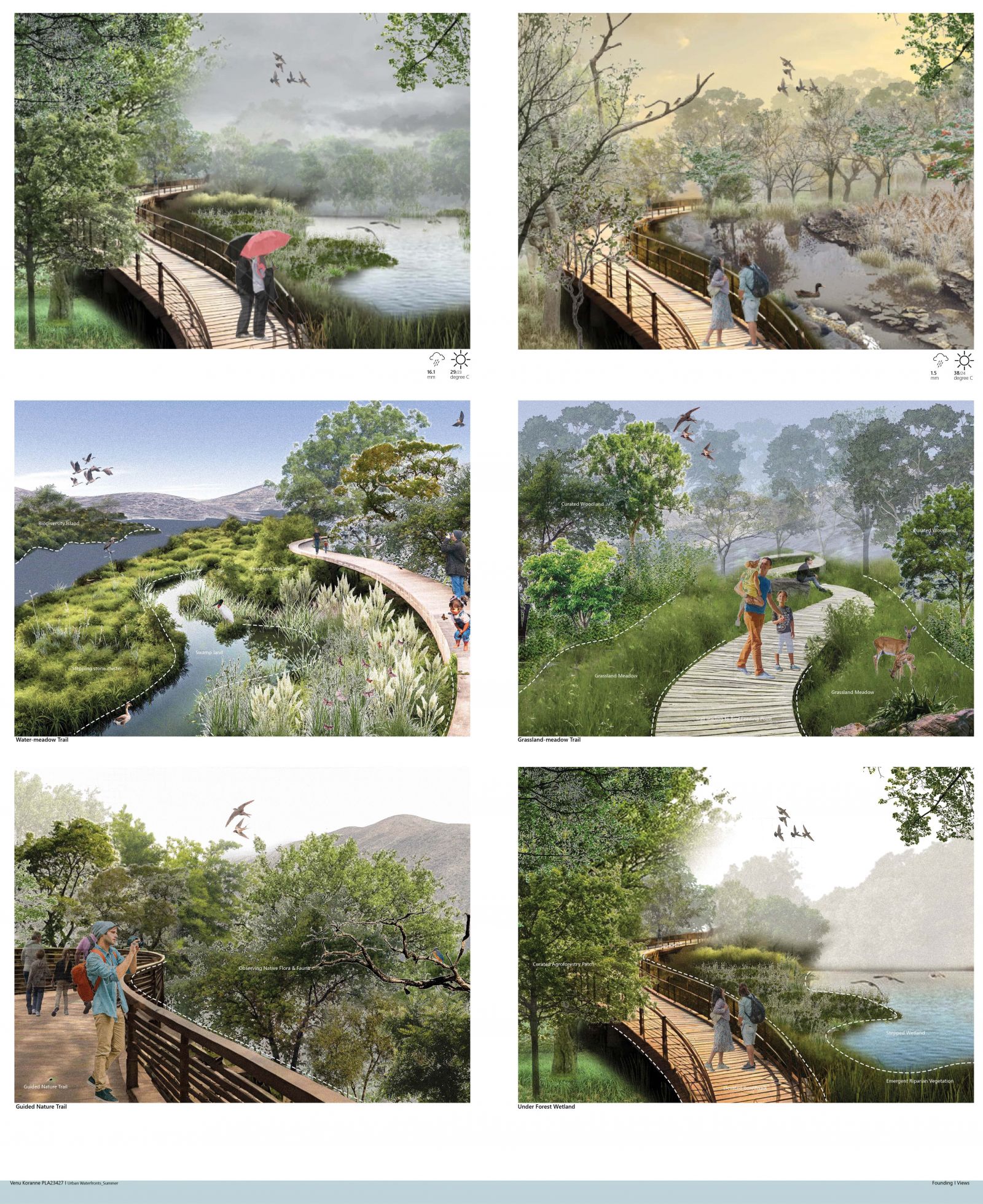Your browser is out-of-date!
For a richer surfing experience on our website, please update your browser. Update my browser now!
For a richer surfing experience on our website, please update your browser. Update my browser now!
Lakes, often perceived as uniform bodies of water, actually unveil diverse and constantly evolving ecosystems. Similarly, Bari ka talab showcases a dynamic heterogeneity across various timeframes and spatial dimensions. Internal waves and stream intrusions create patterns of vertical and horizontal diversity within these aquatic realms. Moreover, the interplay of natural phenomena and human interventions generates ever-shifting mosaics across their landscapes. These interactions contribute highly to the lake environment, fostering biodiversity and ecological complexity.
The design approach revolves around crafting a responsive renewal plan that acknowledges the dynamics between evolving ecological patterns, influenced by both climate fluctuations and human activities. Central to the vision is the restoration of the landscape, the revitalization of habitats for endangered species, and the cultivation of a symbiotic relationship with local communities. The aim is to forge a resilient and diverse ecological mosaic that thrives amidst changing conditions. Through strategic implementation of ecosystem restoration techniques, the design weaves together habitats, allowing the working of a self-sustaining ecosystem. The design offers a solution to rejuvenate the degraded natural environment, effectively turning the green buffer from a liability into an invaluable asset. By prioritizing ecological integrity and minimizing human intervention, the design aims to maximize the long-term benefits for both nature and society.
